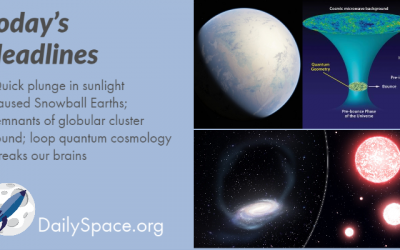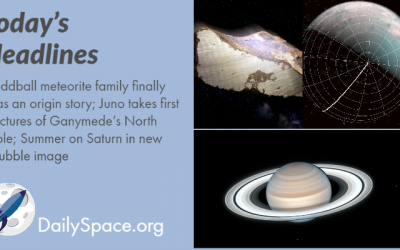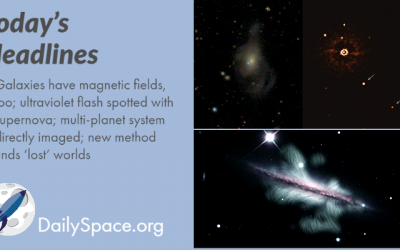
Martian Volcanoes Once Chose Violence
An analysis of images taken by the Spirit rover of olivine-rich rocks in Gusev crater has revealed a much more violent volcanic origin than originally thought and one that likely occurred early in Mars’s history. Plus, balloon science, more Mars, more volcanoes, pretty Hubble images, and What’s Up (a supernova!).
Catch us on NowMedia TV
Saturday 11pm Central / midnight Eastern
Sunday 10pm Central / 11pm Eastern
Watch live on these stations: Houston 21.10, Atlanta 22.10
or tune-in on Apple TV, Roku, YouTube Live, or Amazon Prime
Quick plunge in sunlight caused Snowball Earths; remnants of globular cluster found; loop quantum cosmology breaks our brains
Join us today as we go back in time and examine what caused Earth to become a snowball… more than once. We also take a look at a dismembered globular cluster found at the edge of the Milky Way. And finally, Dr. Pamela gets to explain loop quantum cosmology. Wish her luck!
Rocket Roundup for July 29, 2020
Join us for this week’s Rocket Roundup with host Annie Wilson as we look back at the launches that did and didn’t happen, including the second mission to Mars of the launch window, this one from China. Plus a Roscosmos resupply mission to the ISS and a Chinese rocket full of satellites.
RAVE spectroscopic survey releases final data set; “central engine” of a solar flare characterized; conveyor belt of material seen feeding young star system from parent cloud
Join us today while we take a look at the final data set released by the RAVE spectroscopic survey of stars in the southern hemisphere. Also, scientists at Harvard’s CfA have characterized the “central engine” of a solar flare from our Sun. And finally, scientists in Europe observed a parent cloud feeding material to a pair of young stars.
Oddball meteorite family finally has an origin story; Juno takes first pictures of Ganymede’s North Pole; Summer on Saturn in new Hubble image
Join us today while we take a look at the new origin story for an oddball family of meteorites. Yes, like a comic book hero, the parent (body) is no more. Additionally, we are treated to new images: NASA’s Juno mission gives us Ganymede’s North Pole, and the Hubble Space Telescope presents summer at Saturn.
Galaxies have magnetic fields, too; ultraviolet flash spotted with supernova; multi-planet system directly imaged; new method finds ‘lost’ worlds
Join us today as we learn that galaxies have magnetic fields, too. Also, scientists are excited to catch the ultraviolet flash of a type Ia supernova and directly image a multi-planet extrasolar system. Finally, researchers have developed a new method for finding “lost” worlds in NASA TESS data (but no dinosaurs, thankfully).
Rocket Roundup for July 22, 2020
Join us for this week’s Rocket Roundup with host Annie Wilson as we look back at the launches that did and didn’t happen, including a bunch of suuuuuuuper secret satellites and one Hope-ful mission.


 We record most shows live, on Twitch. Follow us today to get alerts when we go live.
We record most shows live, on Twitch. Follow us today to get alerts when we go live.






